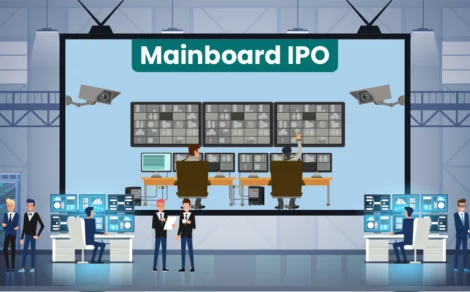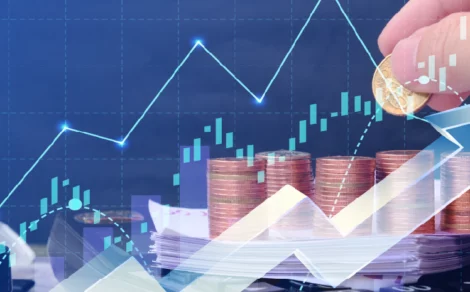Federal Reserve Chair Jerome Powell called tariffs inflationary and indicated recession risks ahead in his press conference on March 20, 2025, held two days after the Federal Reserve meeting in March 2025. Powell predicted this based on the market and survey-based results, incorporating input from both consumers and businesses.
The Federal Reserve interest rate decision 2025 to keep the interest rate range of 4.25% to 4.5% unchanged has raised many concerns among administrative authorities and US citizens, given the tariff issue already signalling global trade wars. Jerome Powell’s recession warning is based on a series of economic growth figures that he cited in his speech at the press conference.
Powell provides a detailed US economic outlook for March 2025 based on the Fed rate decision and the tariff policy modifications that are likely to bring about significant changes in the US economy and the world.
Tariffs are Inflationary
Powell claimed tariffs as “a good part” of the signals indicating inflation in the coming years. While economists have been trying to control inflation caused during the COVID-19 pandemic effectively, the latest changes in the tariffs have affected the speed of recovery of the United States. Though the Fed chairman said the economy was still healthy, he also emphasised that the affected sentiments and policy uncertainties might play a vital role in shaping the economy in the coming years. The “core” inflation is expected to be at 2.7% in 2025, which is 0.2% more than what was projected for December 2024. Both predictions excluded the volatile food and energy categories.
Rising Consumer Prices
The tariff war, according to the Consumer Price Index and other related data, is expected to raise the prices to 1.2% from 1% in the US, taking the real GDP down to 0.6% points in 2025. Tariffs refer to the tax imposed on imports. In this case, the importers in the US have to pay taxes to clear customs requirements for the goods to enter the country. This tax increases costs for US businesses, which then pass the expense on to consumers through higher product prices. This way, the US businesses ensure the impact of tariffs on inflation in 2025 does not affect their profit figures.
Impact on Economic Growth Pace
Powell, while talking about the tariff and trade policies’ impact on the economy, said that he “does think” the tariff inflation would pose a threat to the economic growth pace. The Fed officials have already indicated the economic growth rate to increase by 1.7% in 2025 and by 1.8%in 2026, which is 0.4% points lower than the last predictions made for December 2024. The figures indicate the reduced pace of economic growth.
Recession Fears are Real
Though Powell claimed that the recession risks have risen recently, he also assured that it’s not high enough for the American economy yet. The Fed Chief said the scenario was different two months back when the likelihood of recession was almost nil. However, fast forward to now, the recession fears are real. The Fed Chief also added that the Fed would wait for more clarity ahead before announcing any further changes in the policies or figures. They would not make any decision in a hurry until they have analysed every aspect of the trade policy changes. The rise in the prices of the products has led to weakened consumer spending, which signifies slower economic growth, likely causing a recession.
The Two-Month Transition
The US indicated efficient economic growth until the end of 2024, with a solid labour market filled with relevant job opportunities and the employment rate rising significantly, taking unemployment figures to historic lows. However, the situation and sentiments shifted with President Donald Trump taking charge of the nation, especially with the administration bringing about changes in tariffs. This led to other countries, especially Mexico, Canada, Brazil, Colombia, Argentina, and China, responding with countermeasures or seeking a middle ground.
What Does it all Mean for India?
The inflation and recession fears in the United States will have a direct impact on India’s economy. Both countries share a strong relationship, especially when it comes to trade, investment, and connectivity. Given their solid economic bond, any change in the policies and framework of one would affect the other significantly.
Let us have a quick look at what exactly will/ might change in India if the fears prove true:
- The Indian stock market would be more volatile as foreign Institutional Investors (FII) might withdraw their funds invested in Indian equities.
- The sectors that depend on global demand, especially from the US, might face challenges in the form of reduced export orders.
- The Reserve Bank of India (RBI) may adjust its monetary policies to minimise the impact of US economic concerns on India, potentially affecting the real estate sector and consumer spending.
- The recession fears and expected two Fed rate changes might lead to investors choosing safer assets, causing the Indian rupee to depreciate.
Though the participation of India in the domestic market would not let the country be adversely affected due to the fears of inflation and recession in the US, the country still needs to be prepared for every situation that arises. Investors should consider diversifying their portfolios while keeping a watch on the changing market trends.
Conclusion
Reduced consumer spending and a soured economic attitude have affected the US economy over the past couple of months. Powell agreed that the sentiments in the market are “quite negative”, but he was found sticking to the fact that the economy still seems to be healthy. The economic activities in the nation, according to the Fed Chief, are still efficient, with the labour market and wages being steady and growth-oriented. Powell, in his speech, also mentioned that the Fed would make changes in the policies if needed, but not until the tariff situation is clear.
Stay ahead with exclusive market insights from Torus Digital!


